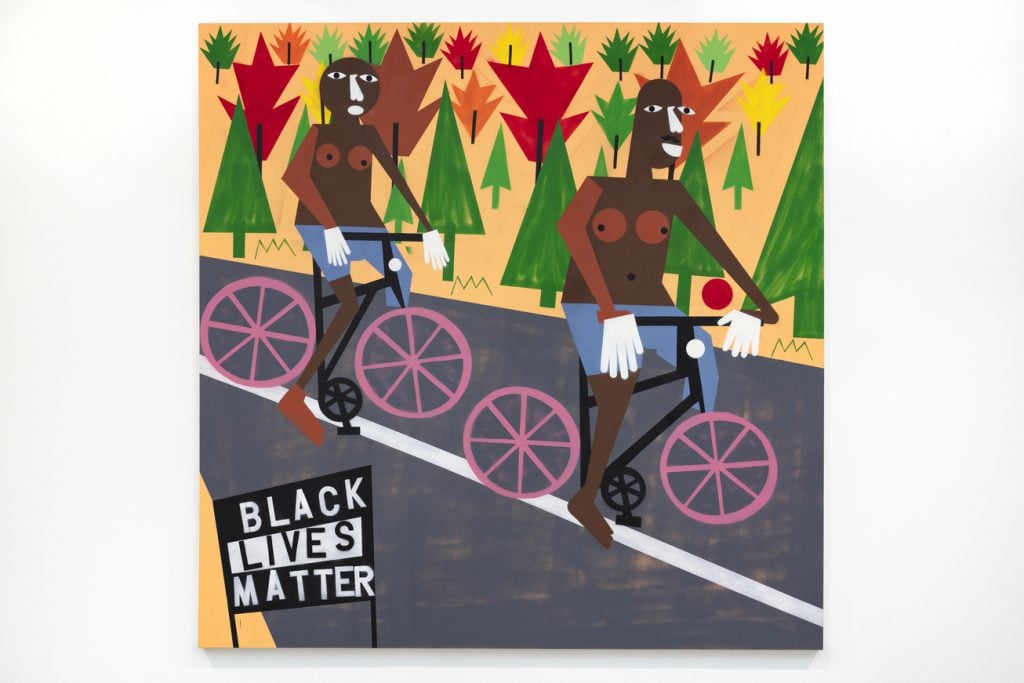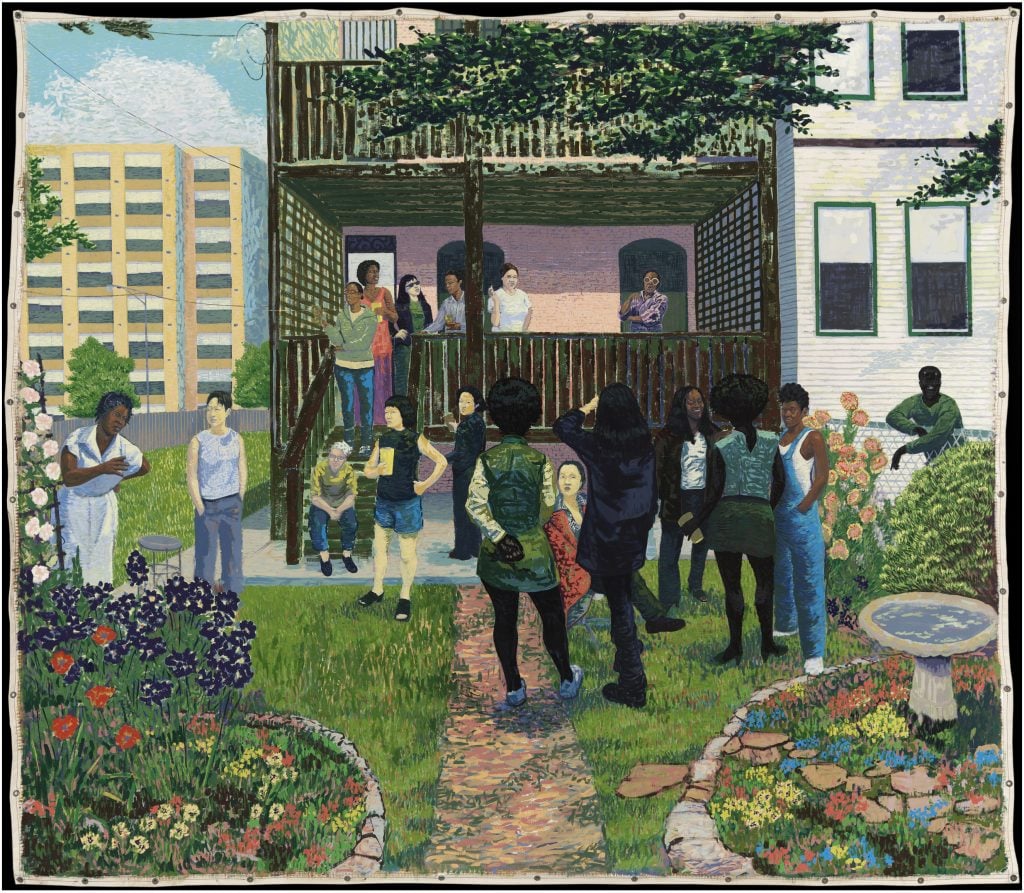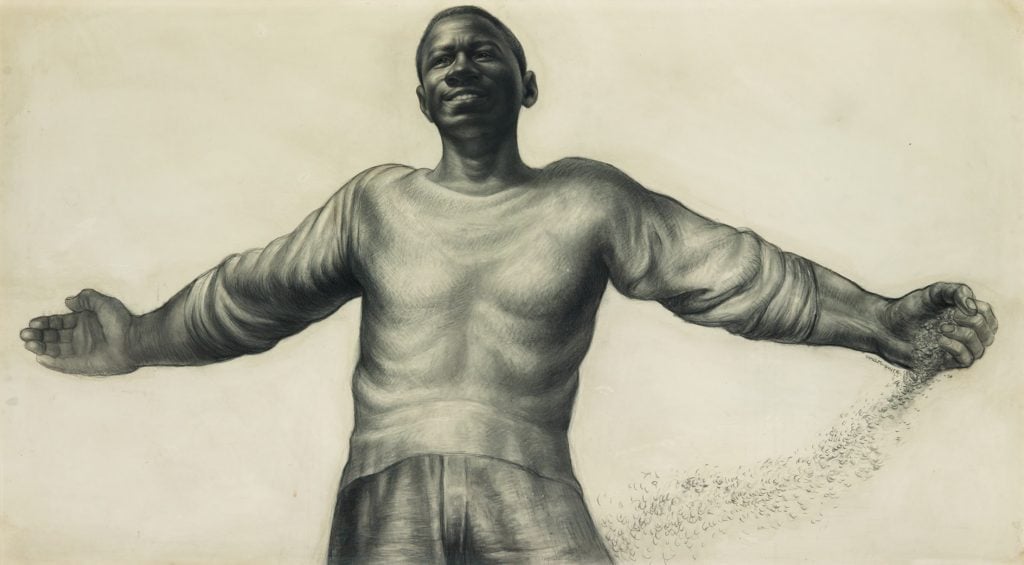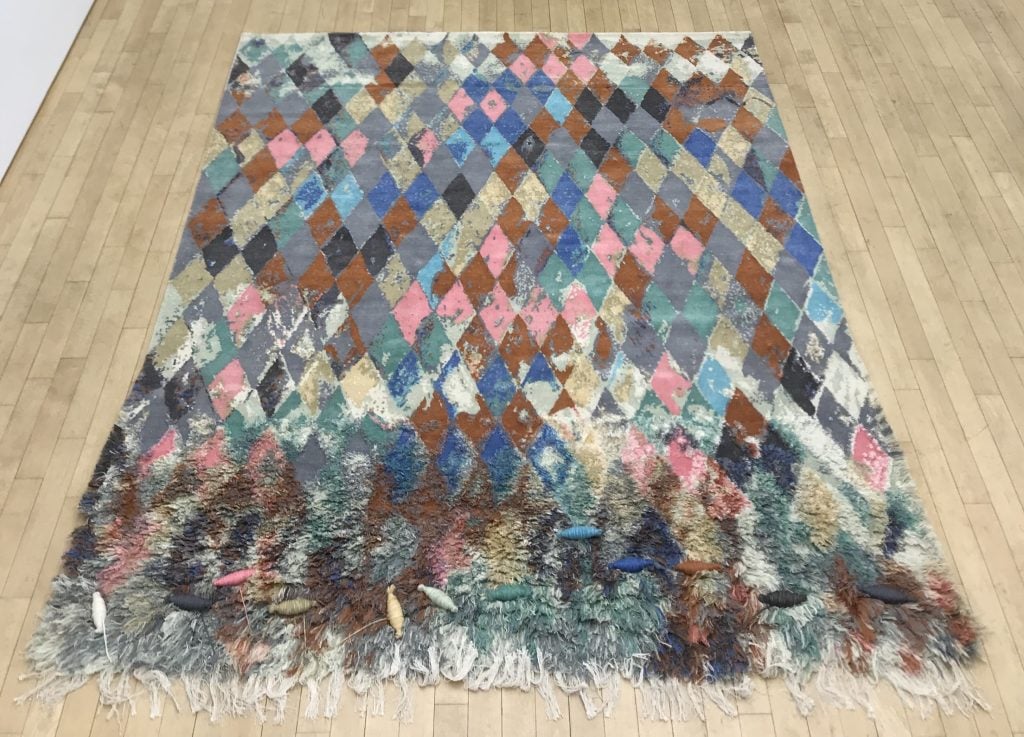Art Collectors
What I Buy and Why: Real Estate Developer Bob Rennie on Collecting Performance and Installing Extremely Clever Bathroom Art
The real estate tycoon tells us all about his personal treasure trove.

The real estate tycoon tells us all about his personal treasure trove.

Nate Freeman

Vancouver-based art collector and real estate mogul Bob Rennie, who showcases his extensive contemporary art collection at the eponymous Rennie Museum, has a collection most art lovers would kill for (okay, maybe not kill, but… maim?).
Rennie, whose real-estate business earned him the nickname “Condo king,” serves on the boards of the Tate Americas Foundation and the Art Institute of Chicago. Below, he dishes on his most prized possessions, what it was like to negotiate with artist Charline von Heyl, and the most impractical works in his collection.
What was your first acquisition (and how much did you pay for it)?
A Norman Rockwell limited edition print, On Top of the World (1972), for $375 in 1974. I was 18 years old.

Nina Chanel Abney, Being Mixie with my Fixie (2019). Courtesy of the artist and Jack Shainman Gallery.
What was your most recent acquisition?
Nina Chanel Abney’s Being Mixie With my Fixie.
Which works or artists are you hoping to add to your collection this year?
I’d like to continue our journey with Dawoud Bey’s trilogy by adding “Louisiana,” [a series of] 24 large-format photographs. We are proud to have in the collection the 16 diptychs and video of Dawoud’s “Birmingham” [series] and the 25 photos of “Night Coming Tenderly, Black.” I would also like to add a set of 14 heads by Thomas J. Price.

Kerry James Marshall, Garden Party (2003). © Kerry James Marshall. Courtesy of the artist and Jack Shainman Gallery, New York.
What is the most expensive work of art that you own?
That is a tough question. I would narrow it down to two masterpieces: Kerry James Marshall’s Garden Party (2003) and his trio Untitled (2011–12), in which the colors red, black, and green echo the Afro-American flag. We stacked the three Untitled canvases vertically [to evoke] a portrait of Kerry, but they are not typically displayed in this format. You miss the rich details in these subtly complex canvases when they’re upwards of 26 feet high on the wall!
Where do you buy art most frequently?
Through trusted relationships with art dealers who are aware of the diversity, inclusion, and social injustice threads that weave the fabric of the collection together.
Is there a work you regret purchasing? If so, why?
I have been thinking about this a lot lately and, in the end, there are no real mistakes. The works that do not fit anymore, those that do not speak to the collection anymore, end up being lessons learned that help us understand better our true goals.

Charles White, O Freedom (1956). Courtesy of Swann Auction Galleries.
What work do you have hanging above your sofa?
In the family room hangs Charles White’s O Freedom (1956) and Adrian Piper’s Race Traitor (2018). A Charline Von Heyl carpet is on the floor, part of an edition of 20 produced by BravinLee. I asked Charline if she would consider leaving the bottom edge unfinished, with spools of thread still attached, and she agreed. Ours is the only one like this. I have young grandkids and a dog, so the bottom edge is usually tucked safely under the sofa.

Charline Von Heyl, After Zenge (unfinished) (2017–19). Courtesy of Bob Rennie.
What artwork, if any, do you have in your bathroom?
On the guest bathroom wall are three Robert Mapplethorpe photos from 1984. Jenny Holzer’s Survival Series: What Country Should You Adopt If You Hate Poor People? (1986) is embedded in the floor in a location that encourages contemplation while “seated.” Just outside a bathroom, appropriately, is Andy Warhol’s Oxidation Painting No. 11 (1978).
What is the most impractical work of art you own? What makes it so challenging?
Our (half) joke to dealers is, “If you can’t sell it because it’s too tough, we’re probably interested.” What would you consider impractical? There’s Allora & Calzadilla’s Stop, Repair, Prepare: Variations on Ode to Joy, No. 2, 2008 (a grand piano with a hole cut into it from which a pianist stands playing Ode to Joy backwards over the keyboard while slowly moving the piano around the room); Martin Creed’s Work No. 850 (2008), which involves athletes running at top speed throughout the space at precise intervals; and Gary Hill’s Frustrum (2006), which requires procuring a 425 oz., 24-karat gold bullion bar and enough black oil to fill a 10-inch deep pool.
What work do you wish you had bought when you had the chance?
Kerry James Marshall’s Black Painting (2003–6).
If you could steal one work of art without getting caught, what would it be?
Artemisia Gentileschi, Judith Slaying Holofernes (1612–13) from the Museo e Real Bosco di Capodimonte in Naples, Italy.